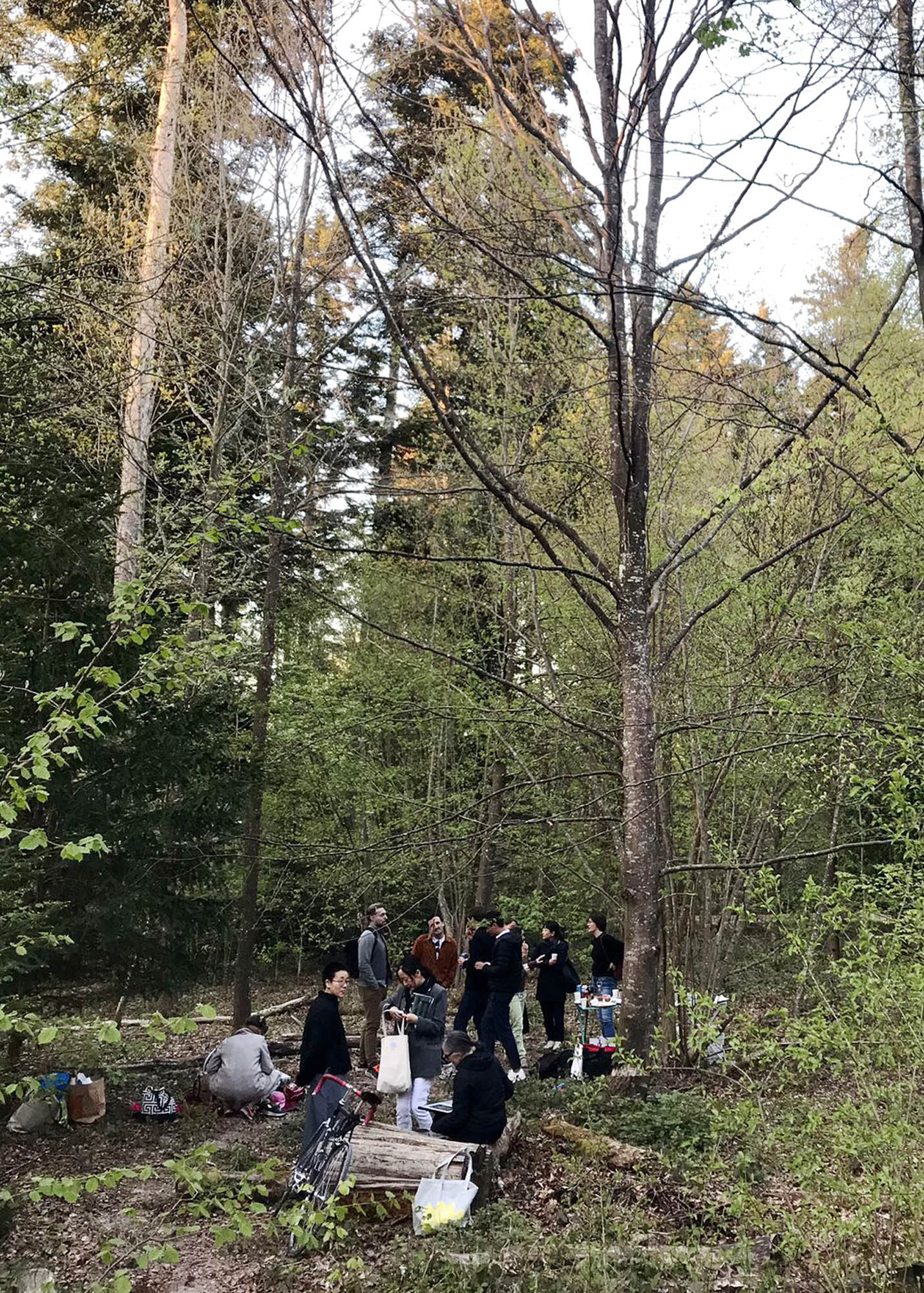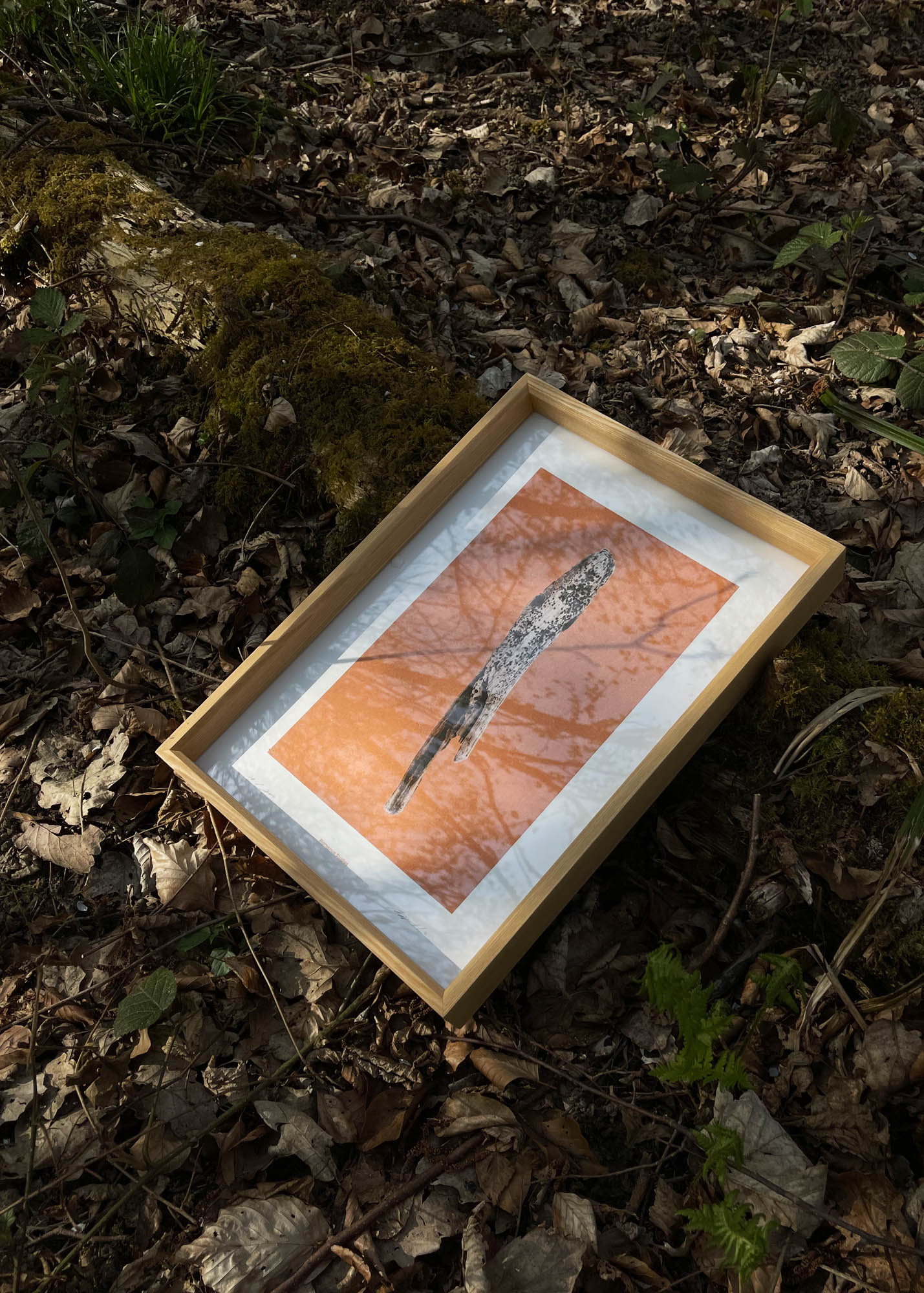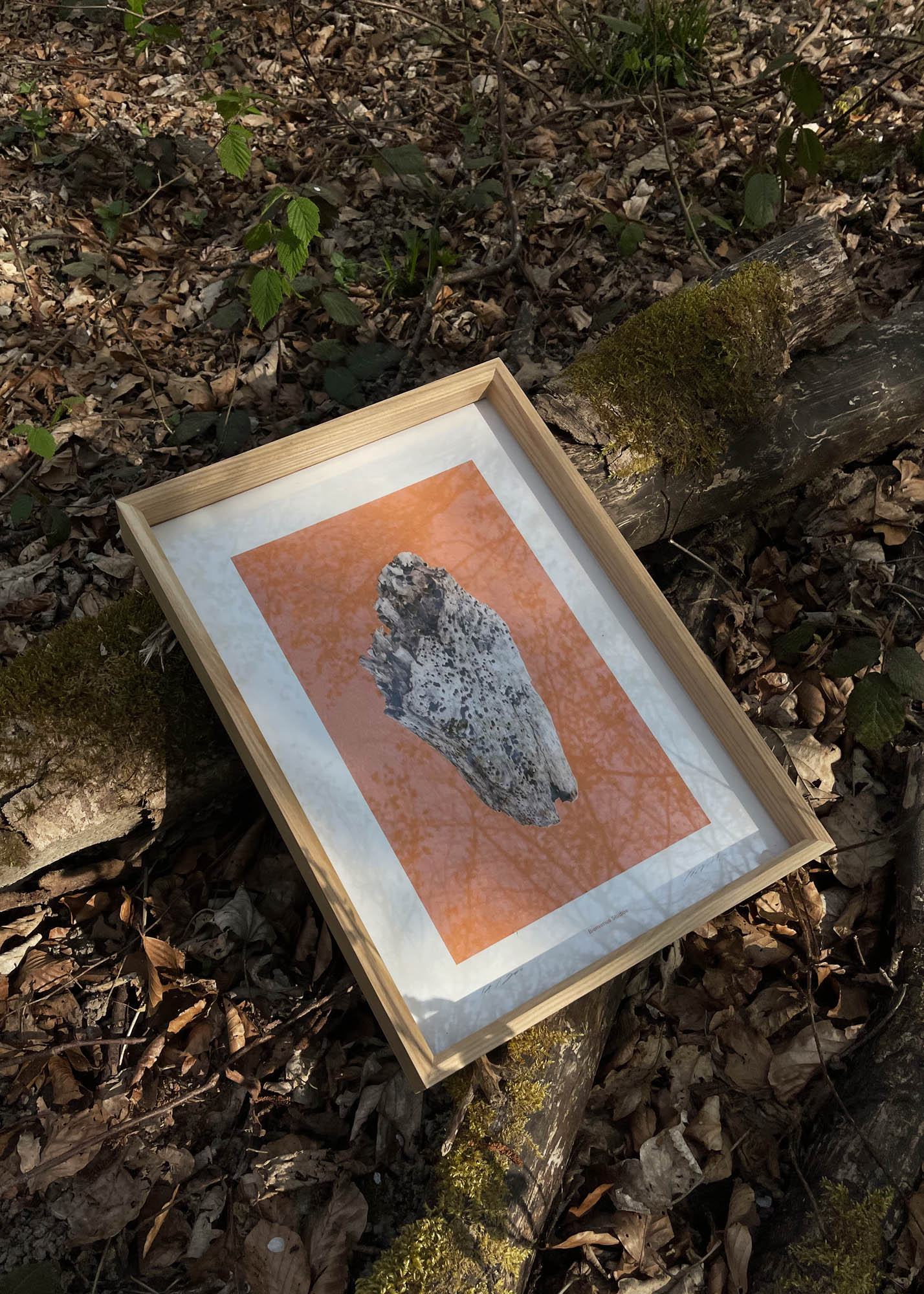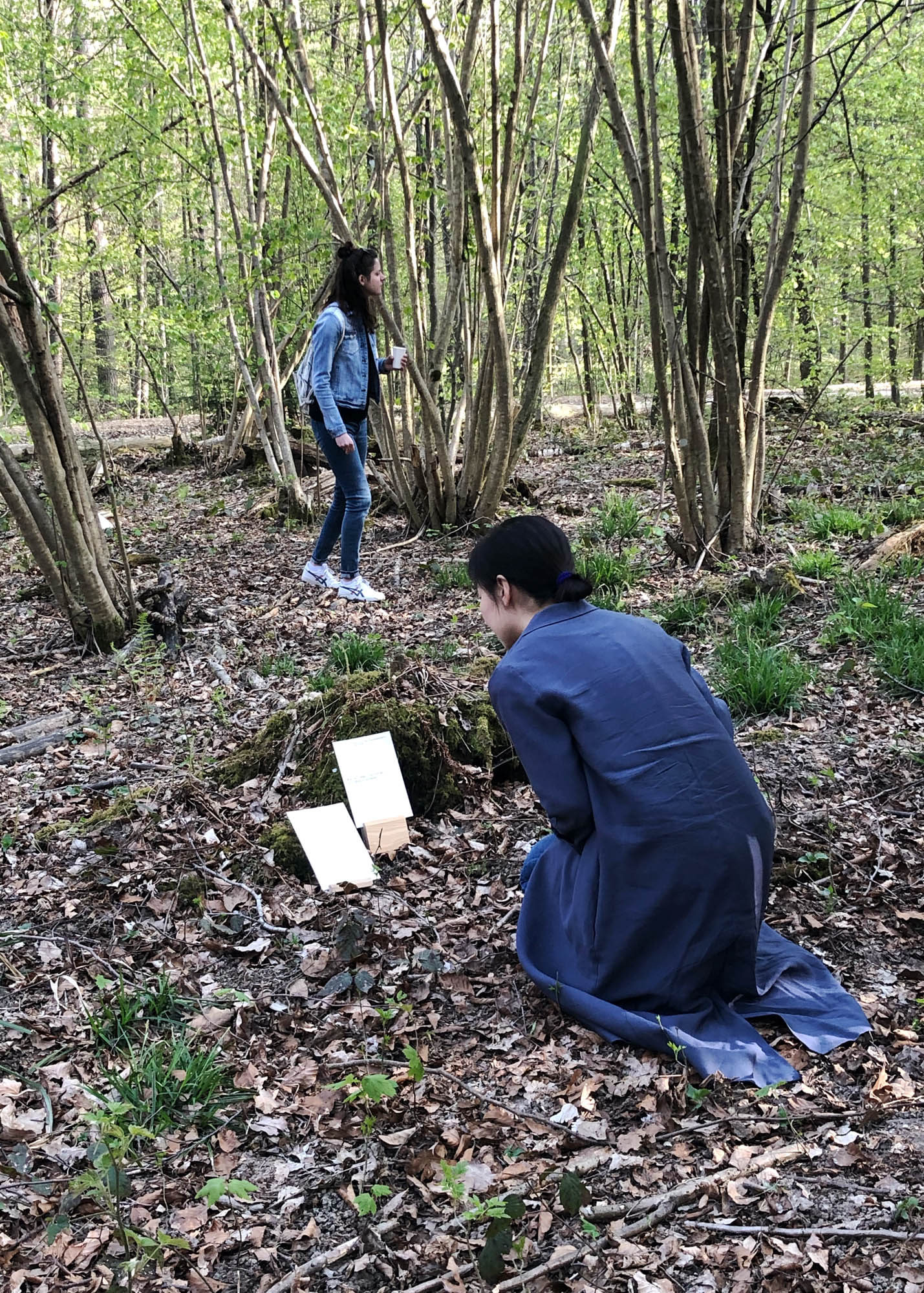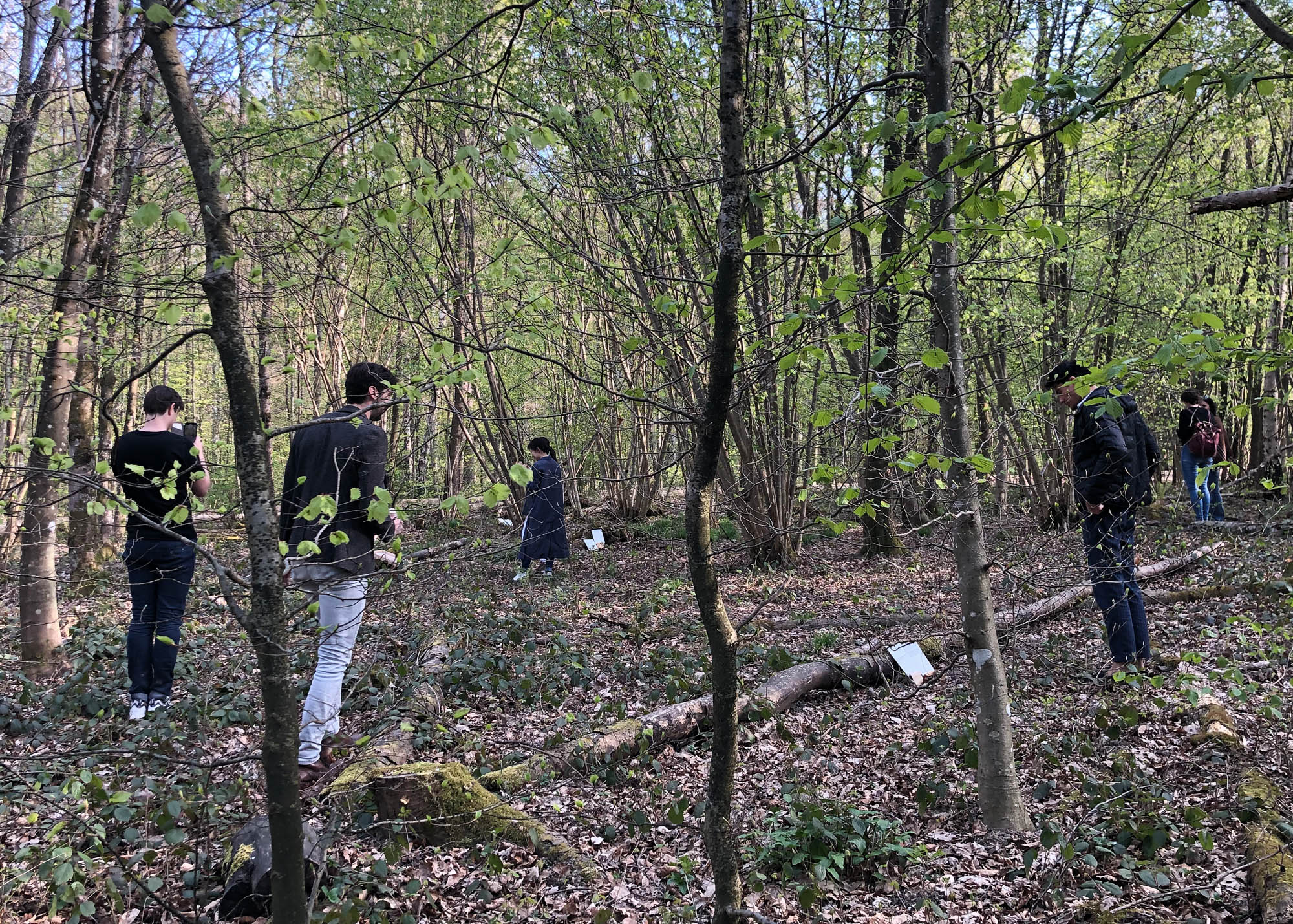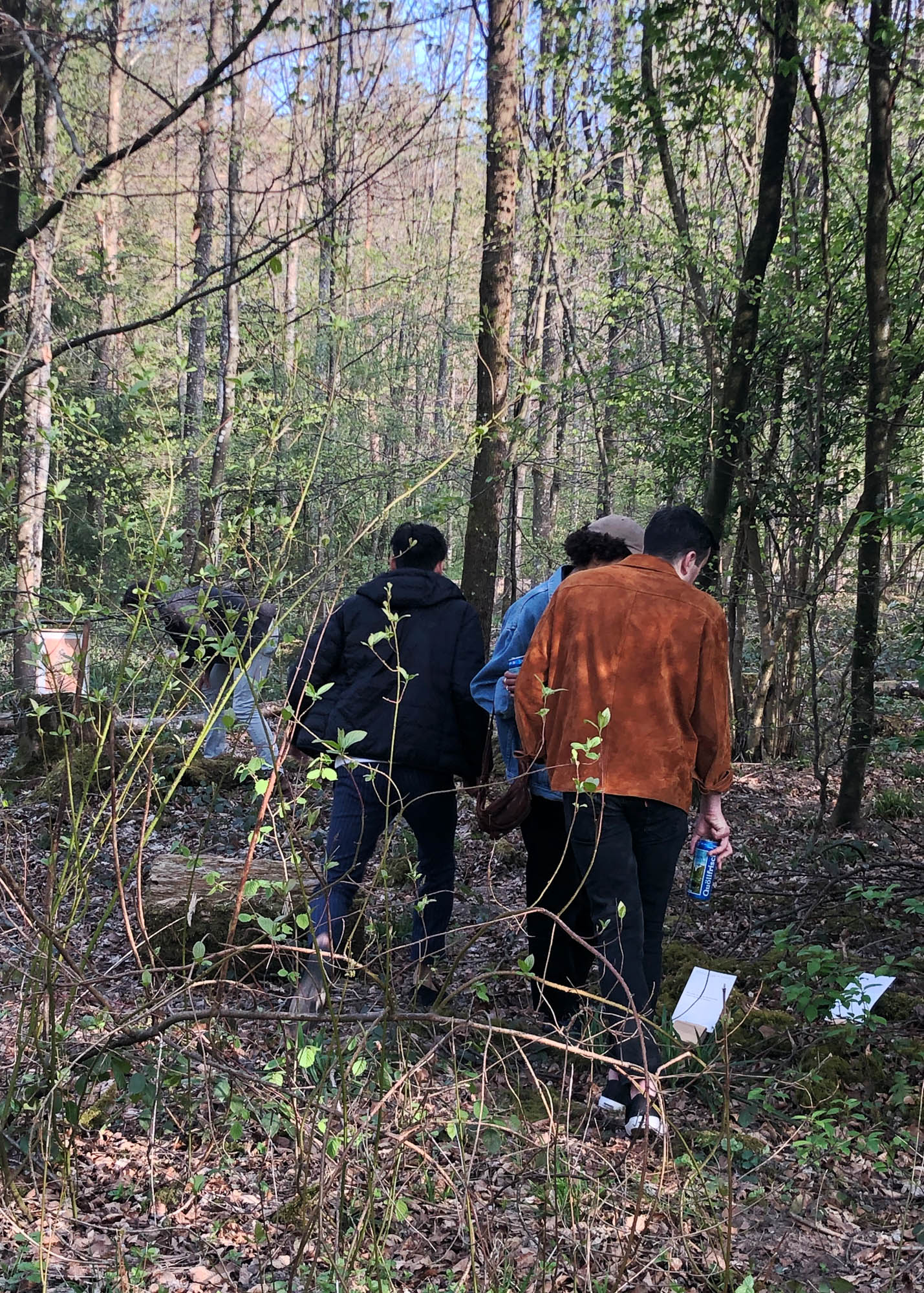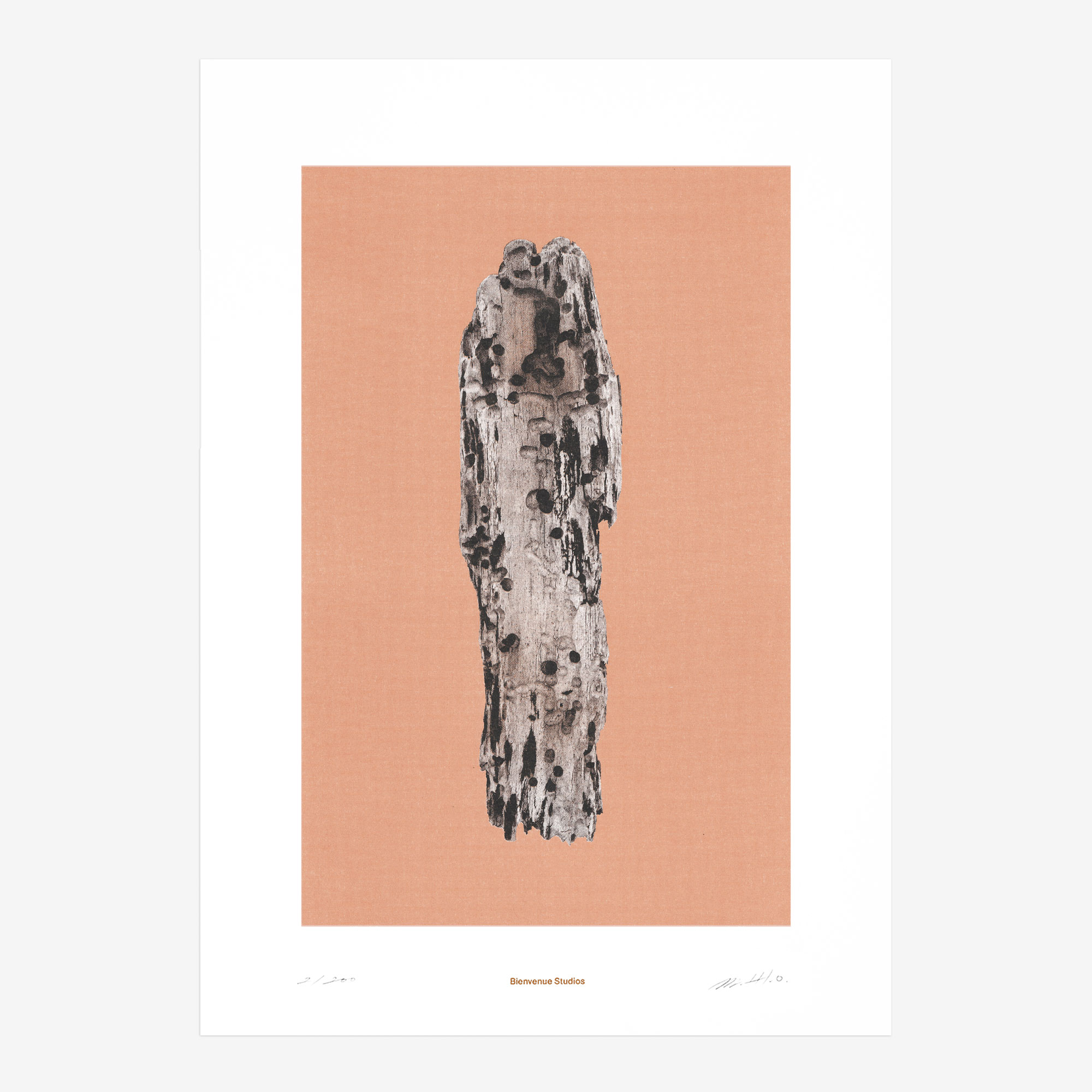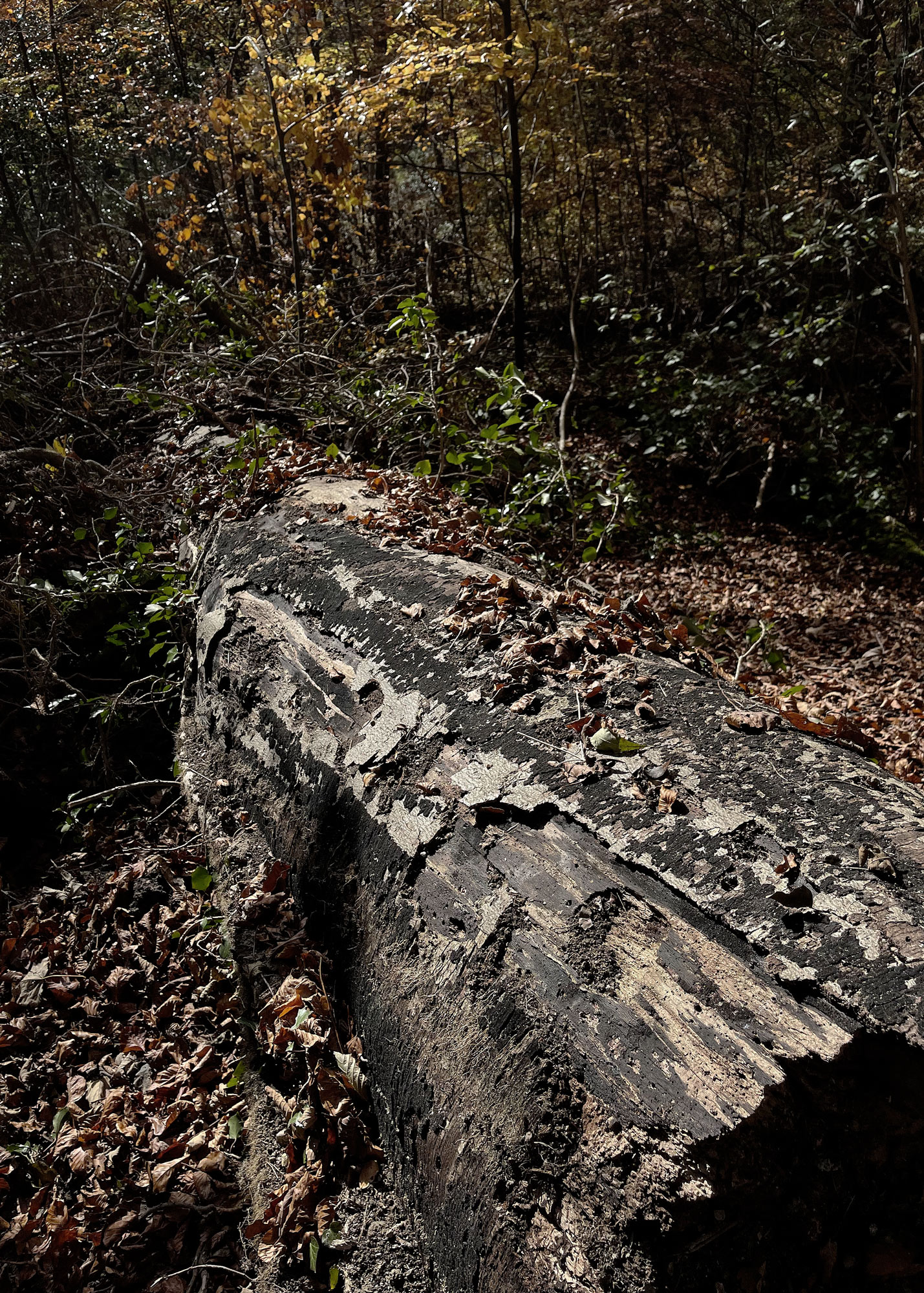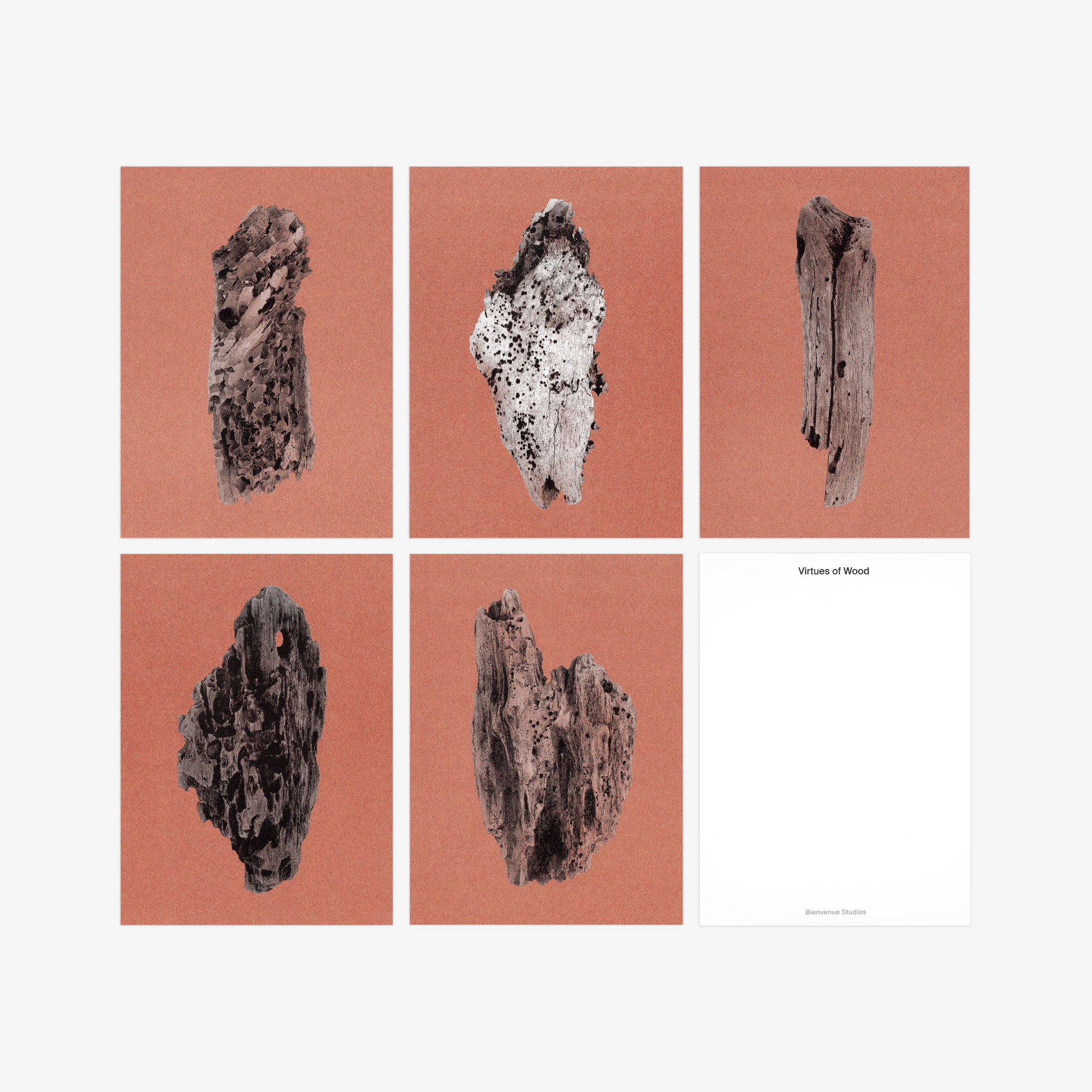
Virtues of Wood
The remarkable deadwood sculptures at the center of our new collection were discovered at Hawke’s Bay, a beach in New Zealand. These works of art created by nature once served as a habitat for countless organisms. They now can be admired in our new collection, “Virtues of Wood”.
Deadwood is not “dead”, quite the opposite, it is a place of rejuvenation. It provides nutrients to young plants and protects them against drought through its ability to retain water. Deadwood is an essential component of the forest ecosystem. Fungi, lichens, mosses, ferns, and many insect species have adapted to this habitat over the course of evolution. There is a wide variety of interdependencies between fungi and insects. Insects transfer fungal spores to the wood, and the fungi, in turn, can be a food source and habitat for other insects. This process is indispensable for the preservation of biodiversity.
Due to forestry and the increasing demand for energy wood, many animals and plants that depend on dead wood are threatened. Everyone can help to protect this habitat by leaving deadwood in the forest or by placing branch piles in the garden or on the balcony themselves.
With the new collection “Virtues of Wood” we would like to help this, from our point of view, still too little considered topic to get a stage and at the same time bring this wonder of nature to the living and working spaces for inspiration.
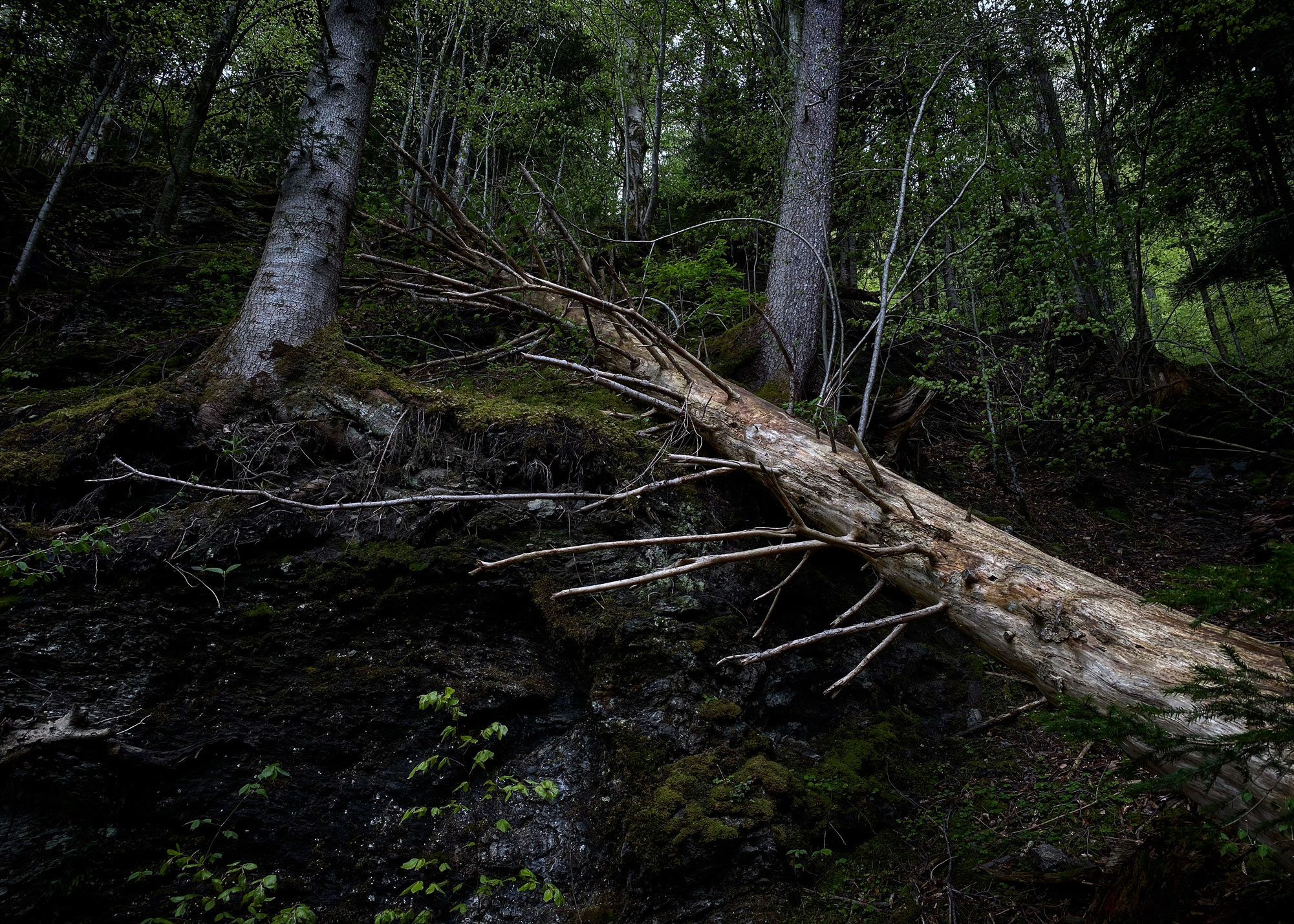
Interview with Dr. Rita Bütler of the Swiss Federal Institute for Forest, Snow and Landscape Research WSL
Why is deadwood so important for our forests?
Deadwood is part of the natural forest cycle and is the basis of life for thousands of species of animals, plants, fungi, mosses and lichens. More than a quarter of all forest species in Switzerland depend on deadwood.
Dead trees play a role as germination beds for forest regeneration, especially in mountain forests. Namely, seedlings benefit from the nutrient supply of decomposing lying dead logs or tree stumps. Logs lying on the ground or standing dead trees also help protect against rockfalls and avalanches: they stabilize the soil and help prevent soil erosion.
Dead trees store water, which benefits the forest ecosystem and its inhabitants during dry periods. Deadwood contains important nutrients and carbon, some of which are transferred to the soil in the course of deadwood decomposition, thus contributing to soil fertility.
Deadwood has not always had the status it has today. Why?
In managed forests, wood was highly sought after as a fuel or building material for centuries. Even droughty trees were almost completely exploited. Thus, for a long time, dead wood was hardly available in the forests of Central Europe – even in areas that were difficult to access. When the demand for wood was no longer so great, people often cleared away wood lying around out of a pure sense of order or for reasons of forest protection.
The amount of deadwood in Switzerland has been increasing since the Second World War. According to the Swiss National Forest Inventory (LFI), it has increased sharply since the 1980s – mainly as a result of the hurricanes Vivian (1990) and Lothar (1999). In addition, timber harvesting in poorly accessible areas is no longer profitable. More dead trees are again left in the forest than before.
How is deadwood protected in Switzerland?
As part of Swiss forest policy, the Federal Office for the Environment and the cantons provide financial support for two effective, area-based measures for natural forest development and promotion of deadwood: the creation of forest reserves and of old-growth islands. By 2030, the federal government and the cantons aim to have ten percent of the Swiss forest area under protection as reserves, about half of which will be natural forest reserves where no more exploitation is to take place. In these areas, trees can grow old and go through their entire life cycle – until they die and decompose. For biodiversity and especially for deadwood-dependent species, such areas are a true paradise.
Leaving so-called habitat trees standing is also financially supported and recommended to all forest owners. Habitat trees bear features such as broken branches or crowns, bark injuries, cavities, dead branches and much more. By providing dead wood on the living tree, they also contribute much to specialized biodiversity, especially if left in the forest until their natural death.

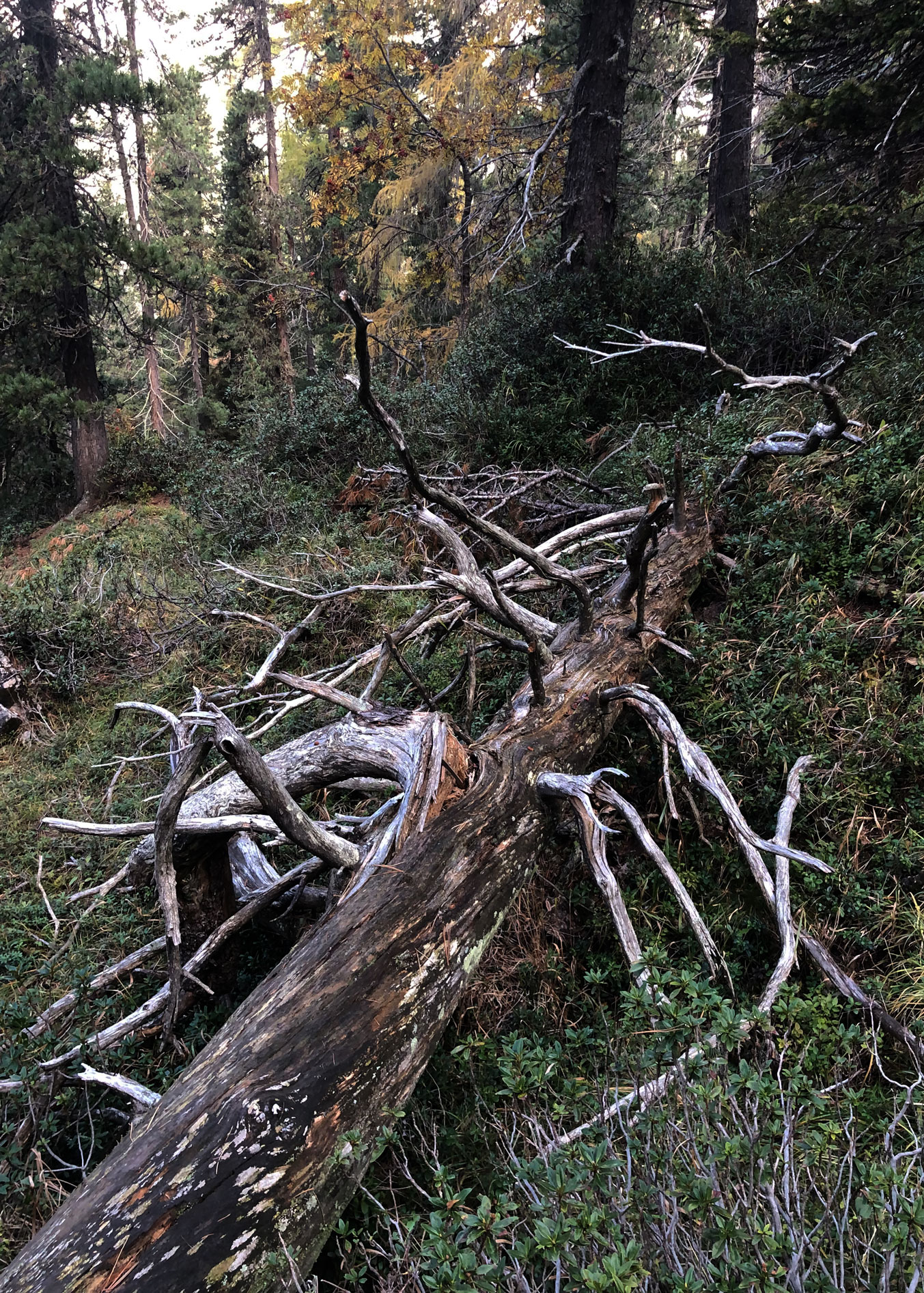
What about the biodiversity of our Swiss forests?
For many centuries, the forest was used for agricultural purposes. The mosaic-like use increased the structural diversity and promoted those forest species that depend on light-rich habitats. In the course of industrialization, the large demand for wood was met by extensive, excessive logging. Structure-rich forest areas and deadwood thus became rarer; the diversity of habitats and species declined. Later, the Swiss forest was heavily modified by the targeted promotion of a few tree species as well as by afforestation and planting. The primary goal was timber production. As a result, spruce is now the dominant tree species in many places, and many stands are even-aged and poorly structured. All this has had a negative impact on biodiversity.
Today, biodiversity is better off in the Swiss forest than in other habitats: near-natural silviculture is slowly causing un-natural spruce stands to disappear, and tree species diversity is increasing. In addition, over 90 percent of the forest is naturally regenerated. Natural regeneration and reserves both contribute to securing genetic diversity in the forest.
In terms of biodiversity, the development is thus basically positive. Nevertheless, there are deficits. Rare and endangered are especially light- and heat-loving species as well as habitat specialists of biologically old development phases. One of the greatest deficits, especially on the Central Plateau, is the lack of diverse structures and the lack of deadwood and old trees.
What can each of us do to protect deadwood?
Deadwood exists in many forms: from piles of branches, to logs lying on the ground, to woody debris, to dead branches on a living tree, to a whole standing dead tree. Even those who do not own a forest can promote deadwood. Here are some examples:
- In the garden: install branch piles in shady and sunny places, leave individual dead branches or branch fragments on living trees, set up insect hotels with pieces of wood.
- In parks: leave old and less vital trees, but prevent direct access under them for safety reasons, e.g. by means of a barrier or by setting up a flower meadow without mowing, set up decorative wooden beiges for deadwood inhabitants.
- In agricultural zones: Preserve individual trees and tree hedges, leave dead logs on the ground at forest edges, no preventive removal of dead trees, if necessary cut them down and leave them on the ground.
- When walking in the woods: recognize and appreciate efforts of the local forest service to promote dead wood, explain the importance of dead wood to children, recognize habitat trees and communicate to the local forest service.
- In schools: Organize activities around deadwood, e.g. with the help of partner organizations (local forest service, Silviva, BirdLife, WWF, Pro Natura etc.).
Further information on the topic: totholz.ch


Process
Vernissage in a forest in Zurich
We are still enchanted by the beautiful spring evening in the Zurich forest, where we presented our new edition “Virtues of Wood”. Walking through the forest, the individual works could be discovered, at the same time the guests learned more about the important role of deadwood for a living forest and biodiversity.
